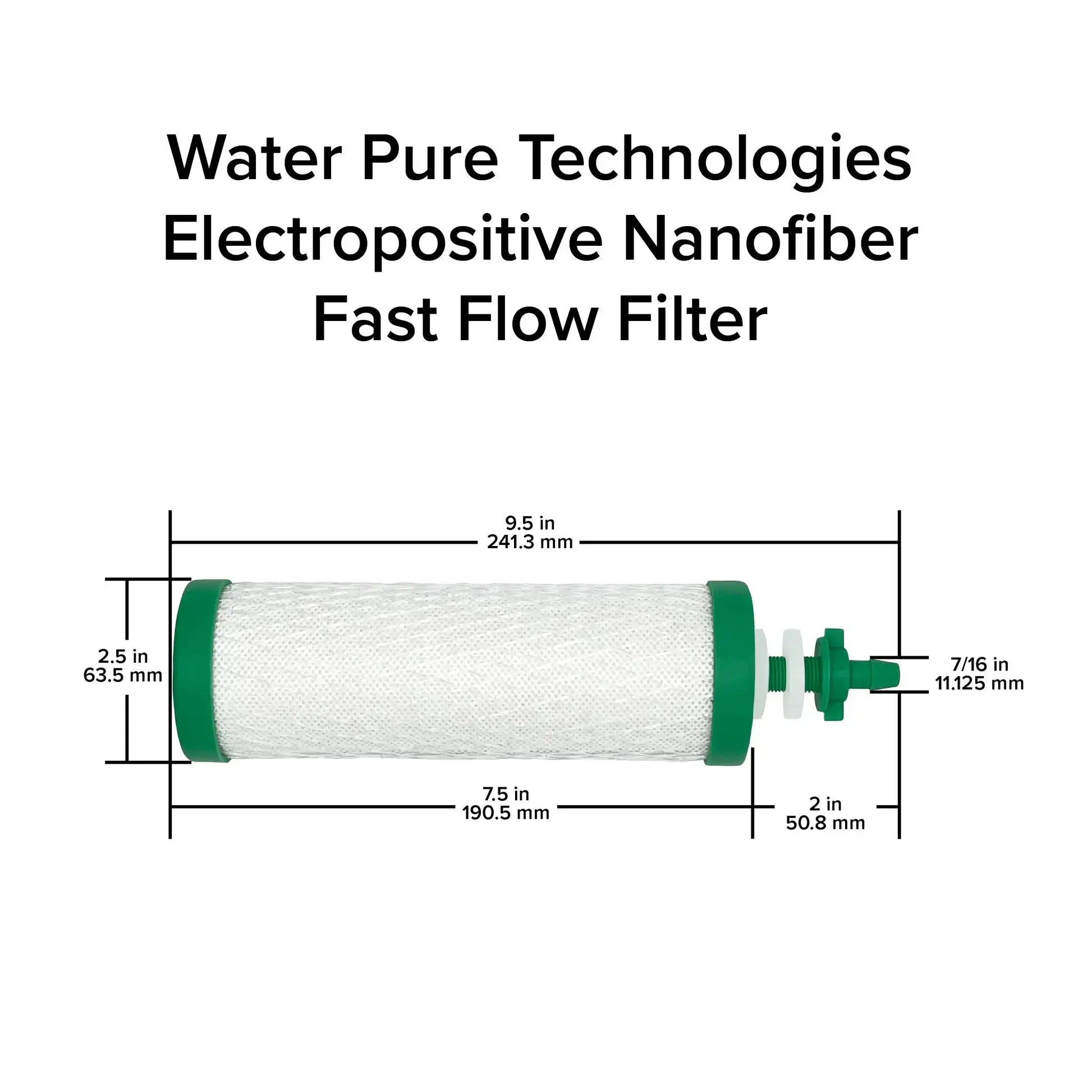The Science Behind Diatomaceous Earth Water Filtration for Better Drinking Water
Exploring the Advantages of Diatomaceous Earth Water Filtering in Home Water Filtration
Diatomaceous earth, a naturally occurring sediment made up of fossilized algae, sticks out in the world of water purification. Its microscopic porous structure allows it to filter out contaminants properly, varying from germs to heavy metals, making it a powerful tool for boosting water quality in homes. This approach not just maintains essential minerals in the water however also uses an eco-friendly choice to artificial filters - diatomaceous earth water filtration. As we discover additionally, the distinctive ecological benefits and relative effectiveness of diatomaceous planet filtration become progressively evident, welcoming a more detailed look at its possibility in contemporary households.
Recognizing Diatomaceous Planet and Its Origins
Diatomaceous planet, a normally occurring, soft sedimentary rock, stems from the fossilized remains of diatoms, tiny aquatic microorganisms. Over centuries, these deposits built up and compacted to create diatomaceous earth.
This special composition makes it possible for diatomaceous planet to have various applications, one of the most remarkable being its usage as a filtration help. Additionally, diatomaceous planet is likewise utilized in products like insecticides, where its absorptive and abrasive properties confirm valuable.

How Diatomaceous Planet Boosts Water Purity
Structure on its varied applications, diatomaceous earth plays an essential duty in improving water pureness. This naturally taking place, silica-based compound is highly porous, making it an outstanding filter media. When utilized in water filtration systems, diatomaceous earth catches impurities, consisting of germs, viruses, and organic pollutants, as a result of its fine, elaborate structure. This causes the elimination of fine particles that are usually missed by other filtration approaches.
In addition, diatomaceous earth is qualified of adsorbing hazardous heavy metals from water, such as lead and arsenic. Diatomaceous earth adds substantially to generating cleaner, extra palatable, and healthier drinking water, aligning with modern health standards and choices.

The Environmental Advantages of Utilizing Diatomaceous Planet in Filtration
While diatomaceous earth is mostly celebrated for its filtration effectiveness, it additionally supplies substantial environmental benefits. Being a normally happening product, diatomaceous earth is a sustainable choice for water filtration.
Furthermore, diatomaceous planet filters can be regrowed and reused several times, which extends their lifespan and decreases the frequency of filter replacements. This reusability feature not only conserves resources however likewise lowers garbage dump waste. Inevitably, the usage of diatomaceous planet for water filtration adds to a smaller sized eco-friendly footprint, straightening with sustainable techniques and environmental conservation efforts.
Comparing Diatomaceous Earth Filtration With Other Water Filtration Techniques
Provided the lasting characteristics of diatomaceous earth talked about previously, it is informative to contrast its efficiency and environmental effect with various other water purification methods. Diatomaceous planet filtering, mainly a mechanical filtration process, successfully gets rid of virus and bits as a result of its porous nature. This contrasts with chemical approaches like chlorination, which makes use of chemicals to eliminate pollutants however can leave unsafe by-products. Contrasted to reverse osmosis, which likewise properly eliminates impurities, diatomaceous planet filtering eats less power and keeps valuable minerals in the water.
Carbon purification, one more popular approach, excels at removing smells and boosting taste however is much less efficient than diatomaceous earth at dealing with a broad range of pollutants. The maintenance and ecological cost of carbon filters, which frequently call for frequent substitutes and result in more waste, can be greater. Thus, diatomaceous planet arises as a durable, environmentally friendly alternative, offering detailed purification with much less regular maintenance and very little environmental footprint.
Practical Tips for Implementing Diatomaceous Planet Purification in your home
Many households are transforming to diatomaceous earth (DE) filtration as a sustainable alternative to standard water purification techniques. One must select a Recommended Reading DE filter that suits the home's water usage and flow rate requirements.
When preparing to make use of the DE filter, it's critical to initial prime it with a slurry of DE and water, making certain an even layer on the filter components to optimize filtration efficacy. Normal maintenance is also essential to maintain efficiency. This involves backwashing the filter system periodically to eliminate gathered pollutants and changing the DE powder.

Final Thought
Diatomaceous planet (DE) presents a compelling remedy for home water purification, combining effectiveness with ecological sustainability. Its ability to filter out contaminations while protecting essential minerals settings it as a more suitable option over conventional techniques. Implementing DE filtering not just enhances water quality but also lines up with environment-friendly techniques by lowering artificial waste and sustaining recyclability. For health-conscious families, DE supplies a effective and functional strategy to accessing cleaner, much safer water.
When used in water filtering systems, diatomaceous earth traps impurities, including germs, viruses, and natural pollutants, due to its penalty, complex structure. Being a naturally happening material, diatomaceous earth is a lasting selection for water filtering. Inevitably, the use of diatomaceous planet for water filtration adds to a smaller sized eco-friendly footprint, lining up with lasting techniques and environmental preservation initiatives.

Lots of homes are turning to Go Here diatomaceous planet (DE) filtering as a sustainable alternative to typical water purification techniques.